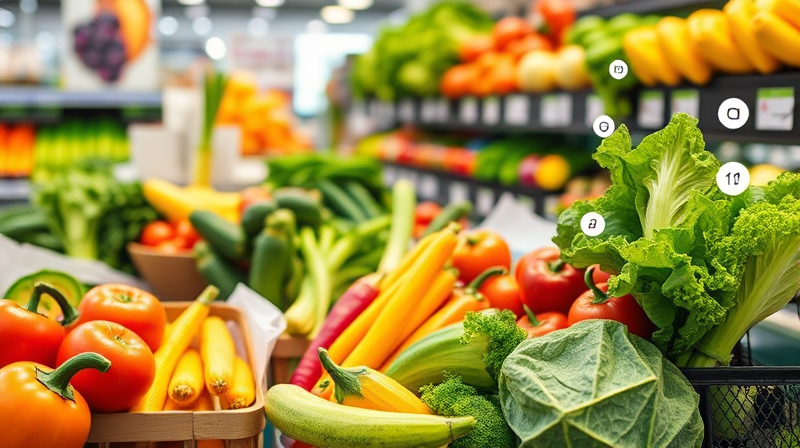Grocery shopping in today’s dynamic environment demands smart strategies that prioritize both health and cost. In a world where food prices are on the rise, households must adopt planning techniques that allow them to prepare nutritious meals without overspending. This article explores practical tips and innovative ideas to guide your shopping process, ensuring that you make the most of every dollar while maintaining a balanced diet for your family.
When it comes to grocery shopping, planning is your greatest asset. Whether you cook at home daily or experiment with meal prep routines, having a solid plan makes a dramatic difference. With the right strategy, not only can you save money, but you can also reduce food waste and promote sustainable living in your home.
Strategic Planning for Smart Shopping
Meal planning is the cornerstone of smart grocery purchases. Begin by taking stock of what you already have in your pantry. Create a detailed list of meals you can prepare over the week, ensuring that you include a variety of nutrient-dense recipes that cater to different tastes and dietary needs. Breaking down your weekly plan into daily menus can help you stay organized and focused.
This careful approach minimizes impulse purchases and unintentionally duplicative items. It is important to remember that preparing a shopping list based on an organized meal plan is an investment in both your health and your budget. By identifying common ingredients across multiple meals, you can optimize your shopping trips and avoid buying items you might not need.
Another aspect to consider is batch cooking. By preparing larger quantities of food and storing leftovers, you not only reduce cooking time on busy days but also ensure that you are leveraging every ingredient to its full potential. Doing so can substantially stretch your food budget and save precious time during the week.
Pro Tips to Enhance Your Grocery Experience
Shopping strategically involves more than just picking the right items; it requires careful consideration of where and how you shop. Here are some key tips:
- Choose your stores wisely: Identify retailers that fit your budget. Discount grocers and warehouse clubs can offer significant savings compared to higher-end retailers.
- Stay informed about sales: Keep an eye on weekly ad cycles and seasonal promotions. With an increasing number of grocery apps available, you can easily track sales and digital coupons, ensuring you never miss a discount.
- Embrace local markets: Local farmers' markets often provide seasonal produce at a lower cost. These venues can be a treasure trove for fresh and organic ingredients while further supporting community-based businesses.
Furthermore, when it comes to bulk buying, evaluate your needs carefully. Bulk purchases are ideal for non-perishables such as grains and canned goods, while perishable items might be better bought in smaller quantities. Consider sharing bulk items with a neighbor or friend to further reduce waste and maintain freshness.
Opting for generic brands is another reliable method to cut costs. Often, store brands deliver quality that's comparable to name-brand items, without the extra cost. Always compare unit prices rather than relying solely on packaging, and be open to experimenting with local and non-branded products.
Another excellent recommendation is to decrease reliance on pre-packaged or ready-made products. Although convenience is appealing, these items often come at a significant price premium. Instead, purchasing whole ingredients enables you to create your own meals, reducing expenses while offering a healthy alternative to processed foods.
To guard against overspending, resisting impulse purchases is essential. One effective method is to shop online or use grocery pick-up services. This minimizes exposure to in-store temptations, particularly in zones heavily populated with snacks and convenience foods.
Thanks to modern technology, several useful apps can simplify your grocery shopping experience. These platforms help you track discounts, manage digital coupons, and even offer meal-planning assistance. For instance, apps like Mealie can introduce you to budget-friendly recipe ideas that maximize both taste and nutrient value.
Alongside modern strategies, understanding the value of simplicity is key when aiming for a wholesome diet. Healthy eating can be simplified by focusing on cost-effective ingredients like beans, lentils, and tofu. Seasonal produce not only ages gracefully in flavor but also never seems to breach your budget.
Maximizing what you have is as important as knowing what to buy. Before each shopping trip, perform a quick audit of your pantry, fridge, and freezer. This helps avoid unnecessary purchases and gives you creative ideas on how to repurpose leftovers into engaging new meals.
Finally, it is worth noting that sustainability is closely linked with smart budgeting. Embracing reusable packaging and eco-friendly products aligns with long-term financial and environmental benefits. Every small sustainable habit adds up to significant savings and a healthier planet.
This comprehensive approach to grocery shopping not only empowers you to be financially responsible but also inspires a healthier lifestyle. By adopting these techniques, you ensure that each shopping trip contributes positively toward reducing waste, saving money, and embracing a nutritious diet that fuels your family’s well-being.
Remember, balancing health and budget in the grocery aisle is a continuous journey. With the right planning, informed choices, and a little bit of creativity, you can transform your grocery shopping experience into an empowering daily ritual that promotes both wellness and financial stability.








